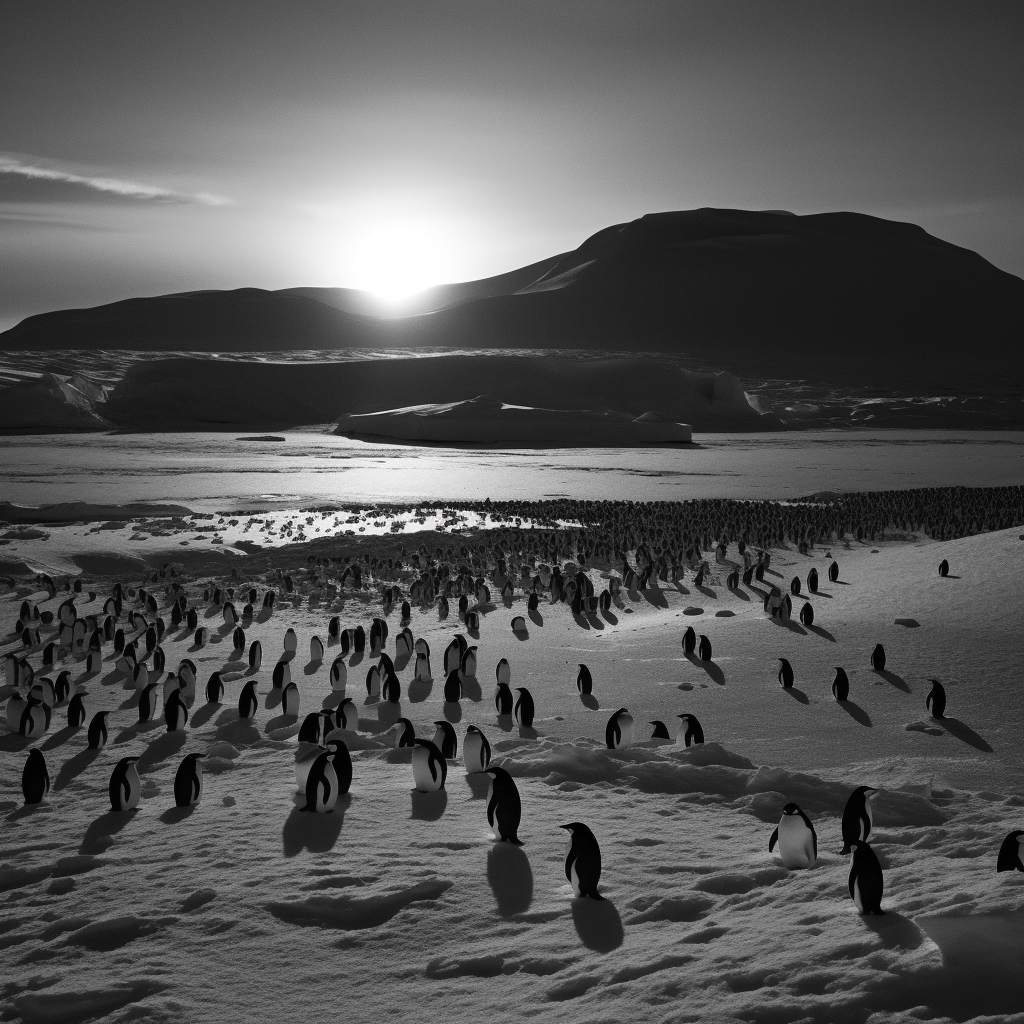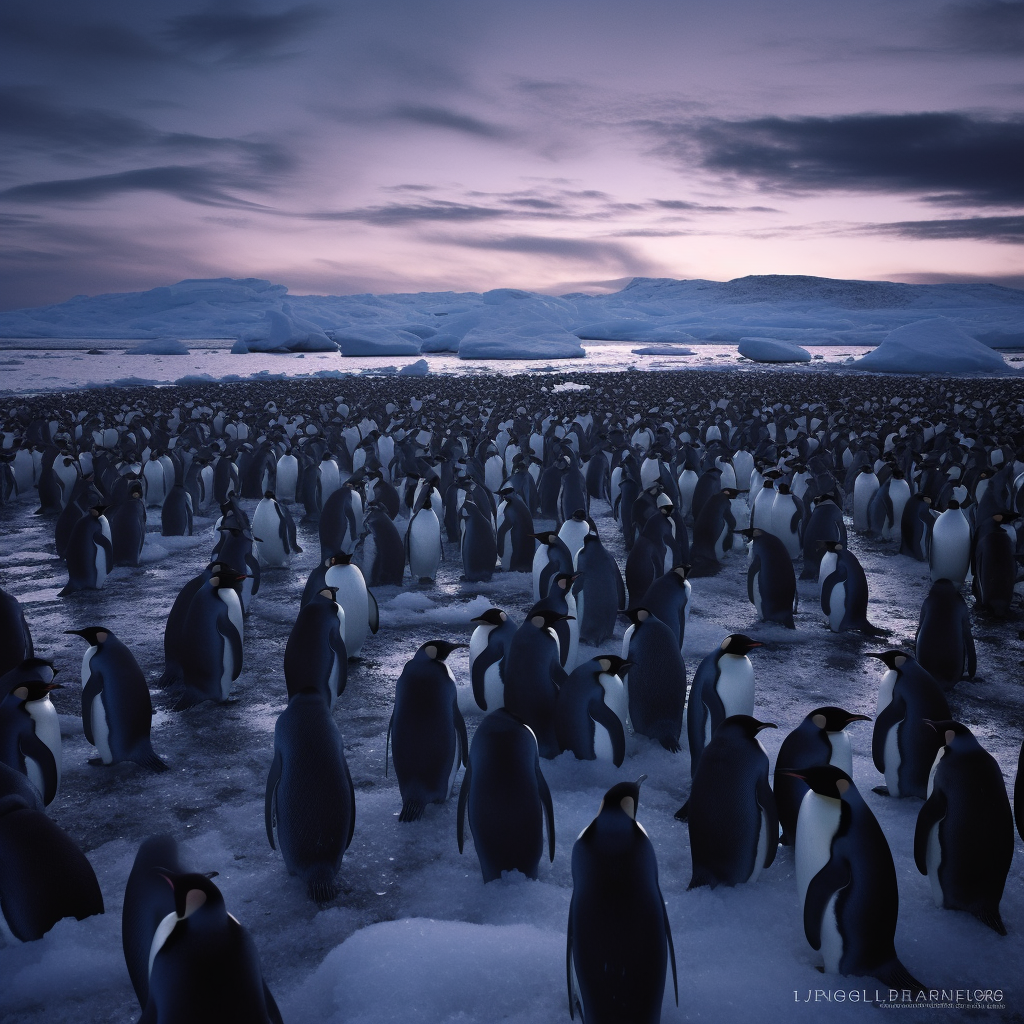Penguins are fascinating creatures that have captured the hearts of many people around the world. These flightless birds are known for their unique adaptations to the cold and harsh environments they inhabit, but have you ever wondered how they sleep? In this article, we will explore the sleeping habits of penguins, including where they sleep, how they sleep, and the various positions they assume while catching some shut-eye. So, let’s dive into the world of penguin slumber and uncover the secrets of their sleep patterns.
Key Takeaways
- Penguins sleep both on land and in the water.
- They have the ability to sleep with one eye open and half of their brain awake.
- Penguins sleep in groups called “rafts” to protect themselves from predators.
- They have a unique sleeping posture where they tuck their bills into their back feathers.
- Penguins have adapted to sleep in extreme weather conditions, such as huddling together for warmth.
The Unique Sleeping Habits of Penguins

A. Why Penguins Sleep Standing Up
Penguins are fascinating creatures that have adapted to life in some of the harshest environments on Earth. One of the most unique aspects of their behavior is how they sleep. Unlike humans and many other animals, penguins have the ability to sleep while standing up. This sleeping posture serves a practical purpose for these aquatic birds.
When penguins sleep standing up, they are able to conserve body heat more effectively. As we know, penguins live in cold environments, such as the Antarctic and sub-Antarctic regions. By standing up, they minimize the amount of their body surface area that is in contact with the icy ground, reducing heat loss. This adaptation helps them survive in freezing temperatures.
B. How Penguins Sleep in the Ocean
Penguins are known for their incredible swimming abilities, and they even sleep in the water. This might seem counterintuitive, as we typically associate sleep with being in a relaxed and stationary position. However, penguins have evolved to sleep in the ocean to ensure their safety and survival.
When penguins sleep in the water, they enter a state called “slow-wave sleep.” During this time, their brain activity slows down, and they become less responsive to their surroundings. This allows them to rest while still being alert enough to detect any potential threats, such as predators or changes in their environment. Penguins have the remarkable ability to sleep with one eye open, which helps them maintain their vigilance even while resting.
C. The Sleep Cycle of Penguins: When and How Long Do They Sleep?
Penguins, like humans, have a sleep cycle that consists of both rapid eye movement (REM) sleep and non-REM sleep. However, their sleep patterns differ from ours in several ways. For example, penguins have shorter sleep cycles and spend less time in REM sleep compared to humans.
The timing and duration of penguins’ sleep vary depending on their species and environmental factors. Some penguins, such as the Emperor penguin, have been observed taking short naps throughout the day, while others may sleep for longer periods at night. The duration of their sleep can range from a few minutes to several hours.
D. The Sleeping Quirks of Different Penguin Species
Different penguin species have their own unique sleeping habits and adaptations. For instance, Emperor penguins, the largest of all penguins, huddle together in large groups to conserve body heat during sleep. This behavior helps them withstand the extreme cold of their Antarctic habitat.
Other species, like the Adelie penguin, build nests out of stones to elevate themselves above the cold ground while they sleep. This provides them with additional insulation and protection from the icy environment.
Overall, penguins have evolved various sleep adaptations to thrive in their cold and aquatic habitats. Their ability to sleep standing up, sleep in the water, and adapt their sleep patterns to their surroundings is truly remarkable. Studying the sleep behavior of penguins not only provides insights into their unique biology but also highlights the incredible diversity of sleep adaptations in the animal kingdom.
The Mystery of Penguin Sleep: Unanswered Questions
A. How Can Penguins Sleep in Such Harsh Conditions?
Penguins are fascinating creatures that have adapted to survive in some of the harshest environments on Earth. One of the most intriguing aspects of their survival strategy is their ability to sleep in these extreme conditions.
Living in icy waters and freezing temperatures, penguins face unique challenges when it comes to getting a good night’s sleep. Unlike humans, who can retreat to the comfort of a warm bed, penguins have to find a way to sleep on ice or in the frigid waters of the Antarctic.
To understand how penguins sleep in such harsh conditions, we need to look at their remarkable adaptations. Penguins have a thick layer of blubber that acts as insulation, keeping them warm in the cold water. This layer of fat also helps them float, making it easier for them to sleep at sea without sinking.
Additionally, penguins have the ability to regulate their body temperature. They can lower their metabolic rate and reduce blood flow to their extremities, conserving energy and preventing heat loss. By doing so, they can withstand the freezing temperatures and sleep comfortably.
Another adaptation that allows penguins to sleep in harsh conditions is their unique sleeping posture. Penguins often sleep in a standing position, with one foot tucked under their body and the other extended outward. This posture helps them conserve body heat and reduces the amount of contact they have with the cold ground or ice.
B. How Do Penguins Sleep at Sea?
Penguins are incredible swimmers, spending a significant amount of their lives in the water. But how do they manage to sleep while floating in the sea?
When penguins sleep at sea, they enter a state known as “unihemispheric slow-wave sleep.” This means that only one hemisphere of their brain sleeps at a time, while the other remains alert. This adaptation allows them to stay vigilant for predators and other potential dangers while still getting some rest.
While sleeping at sea, penguins often form groups called “rafts” to increase their safety. By sleeping in large numbers, they can deter predators and take turns being on the lookout. This communal sleeping behavior ensures that at least some penguins are awake and alert at all times.
C. Why Do Penguins Sleep Most of the Time?
If you’ve ever wondered why penguins seem to sleep so much, you’re not alone. Penguins are known for their long periods of rest, often spending more time sleeping than being active. But why do they sleep so much?
One reason for their extended sleep periods is their need to conserve energy. Penguins have high metabolic rates, which means they burn a lot of calories to stay warm and active. By sleeping for extended periods, they can conserve energy and ensure their survival in the harsh Antarctic environment.
Another reason for their extended sleep is their feeding habits. Penguins rely on hunting for fish and other marine creatures to survive. These hunting trips can be physically demanding and require a lot of energy. By sleeping for long periods, penguins can recover and replenish their energy stores, preparing for their next foraging expedition.
It’s important to note that penguins are not strictly diurnal or nocturnal. Instead, their sleep patterns vary depending on the species and their specific environmental conditions. Some penguins may be more active during the day, while others are more active at night.
In conclusion, the sleeping habits of penguins are still a subject of ongoing research and fascination. These incredible birds have adapted to sleep in extreme conditions, using unique strategies to survive. From their ability to sleep in icy waters to their communal sleeping behavior, penguins continue to amaze scientists and nature enthusiasts alike.
The Sleeping Locations of Penguins

A. Where Penguins Sleep: An Overview
Penguins, those adorable and charismatic birds, have captured the hearts of many with their unique behaviors and adaptations. One of the most intriguing aspects of their lives is their sleeping habits. Have you ever wondered where penguins sleep? Let’s explore the various sleeping locations of these fascinating creatures.
B. Where Do Penguins Sleep at Night?
Penguins, being aquatic birds, spend a significant portion of their lives in the water. However, when it comes to sleep, they need to find a safe and secure spot on land. Penguins typically sleep on land during the night, away from the dangers of the open sea. They gather in large groups called rookeries or colonies, where they huddle together for warmth and protection.
These rookeries are usually located on rocky shores, beaches, or ice shelves, depending on the species and their habitat. The choice of sleeping location may vary depending on factors such as the availability of suitable nesting sites, proximity to food sources, and protection from predators.
C. The Sleeping Habitats of Penguins in Antarctica
In Antarctica, the icy continent that is home to several penguin species, the sleeping habitats of these birds are quite unique. Emperor penguins, the largest of all penguin species, are known for their remarkable adaptations to the harsh Antarctic environment.
Emperor penguins have been observed to sleep on the ice, forming tightly packed groups to conserve body heat. They often assume a posture known as the “huddle,” where they stand upright and lean against each other. This huddling behavior helps them withstand the extreme cold and wind, as they take turns rotating from the outer edge to the center of the huddle.
Other penguin species in Antarctica, such as Adélie and Gentoo penguins, also sleep on the ice but may choose to nest on rocky areas or snow-free patches. These locations provide some insulation from the cold ground and offer protection from predators.
It is worth noting that not all penguins in Antarctica sleep on the ice. Some species, like the Chinstrap and Macaroni penguins, prefer to nest on rocky slopes or cliffs, away from the icy shores. These locations offer better protection against predators and provide a suitable environment for nesting and rearing their chicks.
In summary, penguins have adapted to sleep in various locations depending on their species and habitat. Whether it’s on the ice, rocky shores, or beaches, these remarkable birds find a way to rest and recharge, ensuring their survival in the challenging environments they call home.
The Science Behind Penguin Sleep

A. How Penguins Sleep: A Biological Perspective
Penguins are fascinating creatures that have adapted to life in some of the harshest environments on Earth. One of the most intriguing aspects of their lives is how they sleep. Unlike humans, penguins cannot simply crawl into a cozy bed and close their eyes. Instead, they have developed unique sleep patterns and adaptations to survive in their icy habitats.
When it comes to sleep, penguins face a unique challenge. They spend a significant amount of their lives in the water, where sleeping can be quite risky. If they were to fall into a deep sleep, they could easily become prey for predators or drift too far from their colony. To overcome this challenge, penguins have evolved a sleep behavior known as “unihemispheric slow-wave sleep.”
Unihemispheric slow-wave sleep allows penguins to rest while remaining partially alert. This means that only one hemisphere of their brain enters a deep sleep state, while the other hemisphere remains awake and vigilant. This adaptation allows penguins to sleep with one eye open, quite literally. By keeping one eye open, they can keep an eye out for potential threats while still getting the rest they need.
B. The Role of Sleep in Penguins’ Survival Strategies
Sleep plays a crucial role in the survival strategies of penguins. While they may not need as much sleep as humans do, it is still essential for their overall well-being. During sleep, penguins can recharge their energy reserves, repair any cellular damage, and consolidate their memories. These processes are vital for their physical health and cognitive abilities.
Penguins have adapted their sleep patterns to fit their unique lifestyle. They often take short naps throughout the day, known as “power naps,” to ensure they get enough rest without compromising their safety. These power naps typically last only a few minutes and can be taken while standing or even swimming. This ability to sleep in various positions allows penguins to adapt to their environment and sleep whenever they feel the need.
Another interesting adaptation is the ability of penguins to sleep while floating in the water. They can enter a state of sleep known as “torpor,” where their metabolic rate decreases, allowing them to conserve energy. This adaptation is particularly useful during long hunting trips, as it enables them to rest while still being alert to potential prey.
C. The Impact of Sleep on Penguins’ Health and Longevity
Sleep plays a crucial role in the overall health and longevity of penguins. Adequate sleep ensures that their bodies can function optimally, allowing them to thrive in their challenging environments. Research has shown that sleep deprivation can have detrimental effects on penguins, leading to decreased immune function, impaired cognitive abilities, and even reduced reproductive success.
In addition to the physical benefits, sleep also plays a role in the social dynamics of penguin colonies. Penguins often huddle together for warmth and protection, and sleep is an essential part of this communal behavior. By sleeping in close proximity to one another, penguins can maintain social bonds, communicate, and share body heat, which is crucial for their survival in the cold Antarctic climate.
In conclusion, the science behind penguin sleep is a fascinating field of study. Penguins have evolved unique sleep adaptations to thrive in their icy habitats. Their ability to sleep with one eye open, take power naps, and enter a state of torpor while floating in the water showcases their remarkable survival strategies. Sleep plays a vital role in their overall health and longevity, ensuring they can endure the challenges of their environment and continue to thrive as a species.
Conclusion
In conclusion, penguins have fascinating sleep patterns that are adapted to their unique environment. These flightless birds are able to sleep both on land and in the water, with some species even sleeping while standing up. Penguins have developed various strategies to ensure their safety while sleeping, such as forming large groups called “huddles” to conserve heat and protect themselves from predators. They also have the ability to sleep with one eye open, allowing them to remain vigilant even while resting. Additionally, penguins have the ability to enter a state of “unihemispheric sleep,” where one half of their brain remains awake while the other half sleeps. This allows them to keep an eye out for danger while still getting the rest they need. Overall, the sleeping habits of penguins are a testament to their remarkable adaptations and survival strategies in the harsh Antarctic environment.
Frequently Asked Questions
1. Why do penguins sleep standing up?
Penguins often sleep standing up as part of their survival strategy. This position allows them to conserve heat by reducing the amount of their body exposed to the cold Antarctic environment. It also enables them to quickly escape from predators if necessary.
2. How do penguins sleep in the ocean?
Penguins can sleep in the ocean by floating on the water’s surface. They enter a state of rest, but remain semi-alert to potential threats. This is part of their sleep adaptations in aquatic environments.
3. When do penguins sleep?
Penguins typically sleep during the night, but they can also take short naps during the day. Their sleep patterns are flexible and can adapt to their feeding schedule and the presence of predators.
4. How do emperor penguins sleep?
Emperor penguins sleep standing up, often in large groups to conserve heat. They can also sleep while leaning forward with their beak resting on their chest, which helps to reduce heat loss.
5. Where do penguins sleep?
Penguins sleep in various locations depending on their species and environment. Some sleep on land, often in large colonies, while others sleep in the ocean. In Antarctica, Emperor and Adélie penguins often sleep on the ice.




